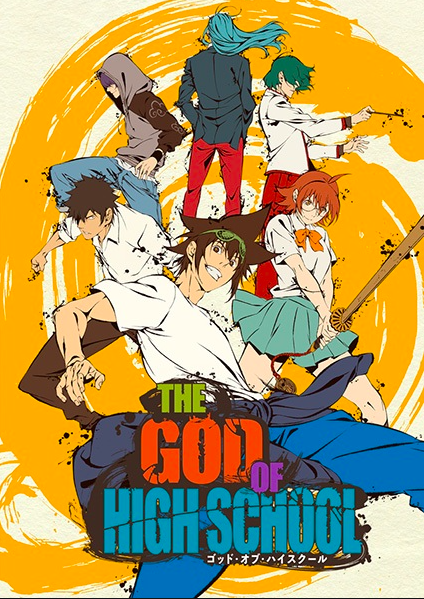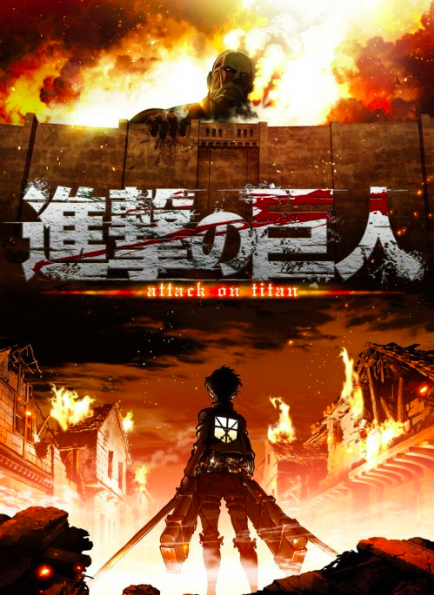Introduction to Attack on Titan
“Attack on Titan” (Shingeki no Kyojin) is a Japanese manga and anime series that has captivated fans worldwide with its intense action, complex characters, and intricate plot. Created by Hajime Isayama, this series takes place in a dystopian world where humanity is on the brink of extinction, constantly threatened by mysterious giants known as Titans.
The series first debuted as a manga in 2009, and the anime adaptation followed in 2013, quickly rising to prominence due to its unique premise, emotional depth, and jaw-dropping action sequences.
The World of Attack on Titan
The Walls and Humanity’s Last Bastion
In the world of “Attack on Titan,” humanity lives within massive, concentric walls, built to protect the last remnants of society from the Titans. These towering structures—Wall Maria, Wall Rose, and Wall Sina—are the only things standing between humans and the terrifying giants that roam outside. Each wall protects a different district, with the innermost wall (Sina) sheltering the elite and the outermost (Maria) housing those who live closest to danger.
The Titans: Fearsome Giants
Titans are colossal humanoid creatures with a single, terrifying purpose: to consume humans. What sets them apart from ordinary monsters is their lack of consciousness and relentless nature. They range in size, but the larger ones can tower over the walls, creating a constant sense of fear and dread for humanity.
The Fall of Wall Maria
The story kicks off with a devastating event: the fall of Wall Maria. When a Colossal Titan breaches the outermost wall, Titans flood into human territory, killing thousands and forcing the survivors to retreat behind Wall Rose. This catastrophic event sets the tone for the series and introduces us to the emotional and psychological trauma of the characters.
Eren Yeager’s Journey
At the heart of “Attack on Titan” is Eren Yeager, a young boy whose life is upended by the Titan invasion. After witnessing the death of his mother, Eren vows to eliminate every Titan and reclaim the world for humanity. His quest for revenge drives the plot forward, but as the story progresses, Eren’s journey becomes far more complex, leading to shocking revelations and moral dilemmas.
Main Characters of Attack on Titan
Eren Yeager: The Protagonist
Eren Yeager is not your typical hero. His hatred for Titans fuels his determination, but as the story unfolds, his character undergoes a drastic transformation. From a hot-headed youth to a figure of moral ambiguity, Eren’s development is one of the most talked-about aspects of the series.
Mikasa Ackerman: Eren’s Protector
Mikasa is Eren’s adoptive sister and one of the most skilled fighters in the series. Her loyalty to Eren is unwavering, and her calm, collected demeanor contrasts with his impulsiveness. As a member of the Ackerman family, Mikasa possesses extraordinary physical abilities, making her one of the most formidable soldiers in the battle against the Titans.
Armin Arlert: The Strategist
Armin is Eren’s childhood friend and a brilliant tactician. Although he lacks physical strength, his intelligence and ability to devise plans in the heat of battle make him a key figure in humanity’s fight for survival.
Levi Ackerman: Humanity’s Strongest Soldier
Captain Levi is revered for his unmatched combat skills and ruthless efficiency on the battlefield. As a member of the elite Survey Corps, Levi is responsible for some of the most jaw-dropping action scenes in the series, and his stoic personality has made him a fan favorite.
Themes Explored in Attack on Titan
Freedom vs. Oppression
One of the core themes of “Attack on Titan” is the concept of freedom. Characters are constantly grappling with the notion of what it means to be free in a world where their very existence is threatened. The walls, once seen as protection, are also a symbol of oppression, trapping humanity in a cage of fear.
Survival of Humanity
The struggle for survival is a constant theme throughout the series. Whether it’s the physical survival against Titans or the moral survival of the characters as they face impossible choices, the series forces viewers to question what it means to truly survive.
Betrayal and Loyalty
“Attack on Titan” is filled with moments of betrayal and loyalty, as characters wrestle with their allegiances. Some of the most shocking twists come from trusted figures revealing themselves as enemies, creating an atmosphere of paranoia and tension.
The Evolution of the Titans
Different Types of Titans
As the story progresses, we learn that Titans are not all mindless beasts. There are different types, including the intelligent Titans who can control their transformations and possess unique abilities. These Titans, such as the Colossal Titan and the Armored Titan, play pivotal roles in the plot.
The Founding Titan’s Role
The Founding Titan is one of the most significant elements of the series’ mythology. This Titan has the power to control other Titans, manipulate memories, and alter the course of history. Its role in the plot is central to the mysteries that unfold later in the series.
Attack on Titan’s Impact on Pop Culture
Global Fanbase
“Attack on Titan” has amassed a global fanbase, with millions of viewers across the world. Its gripping storylines and emotionally resonant themes have made it a cultural phenomenon, transcending language barriers and sparking discussions about freedom, humanity, and morality.
Influence on Anime and Manga
The series has also had a profound impact on the anime and manga industry. Its success helped popularize dark, mature narratives in the medium, influencing other creators to take risks and explore complex themes in their work.
Attack on Titan Anime vs. Manga
Differences in Storytelling
While both the anime and manga follow the same overarching story, there are subtle differences in pacing and presentation. The anime, with its stunning animation and intense soundtrack, brings the action sequences to life in a way that the manga cannot, though some fans prefer the depth of the manga’s storytelling.
Adaptation and Reception
Overall, the anime adaptation has been well-received, though it has faced some criticism for pacing issues and alterations to certain plot points. Despite these differences, both versions of the story have their strengths, and fans often debate which medium tells the story better.
Symbolism in Attack on Titan
The Walls as a Metaphor
The walls in “Attack on Titan” are a powerful metaphor for safety and oppression. While they protect humanity from the Titans, they also imprison them, highlighting the tension between freedom and security.
Titans as a Representation of Fear
The Titans themselves can be seen as a manifestation of fear—the fear of the unknown, of death, and of losing control. They are the embodiment of humanity’s deepest anxieties, and their presence in the story forces characters to confront these fears head-on.
Memorable Battles and Action Sequences
Battle for Trost
The Battle for Trost is one of the series’ earliest and most thrilling moments, as humanity mounts a desperate defense against the Titans after the fall of Wall Maria. It showcases the brutal reality of combat and introduces viewers to the terrifying power of the Titans.
Eren vs. Reiner: Clash of Titans
The showdown between Eren and Reiner is another highlight, pitting two powerful Titans against each other in a brutal and emotional battle. This fight is not just a physical clash but a confrontation of ideologies and motivations.
Attack on Titan’s Finale: A Divisive Ending
The Controversy Surrounding the Ending
“Attack on Titan” concluded with a divisive ending that left many fans conflicted. Some appreciated the bold choices made by the creator, while others felt it didn’t live up to the expectations set by earlier parts of the series.
Fan Theories and Interpretations
Despite the controversy, the ending has sparked numerous fan theories and discussions. Many viewers continue to debate the meaning behind key events, and fan interpretations have kept the conversation alive long after the finale aired.
Attack on Titan’s Music and Soundtrack
The music of “Attack on Titan,” composed by Hiroyuki Sawano, has become iconic. Tracks like “Guren no Yumiya” and “Vogel im Käfig” have elevated the emotional stakes of the series and have become synonymous with the tension and excitement of the show.
Why “Attack on Titan” Became a Phenomenon
Gripping Storyline and Complex Characters
At its core, “Attack on Titan” succeeds because of its engaging storyline and multi-dimensional characters. Eren, Mikasa, Armin, and Levi each bring something unique to the narrative, and their personal struggles make the story more than just a simple battle between humans and monsters.
Unpredictable Plot Twists
The series is also known for its shocking plot twists, which have kept fans on the edge of their seats. From unexpected betrayals to mind-blowing revelations, “Attack on Titan” constantly subverts expectations, making it one of the most unpredictable stories in recent years.
Conclusion: The Legacy of “Attack on Titan“
“Attack on Titan” is a series that has left an indelible mark on anime and manga culture. Its complex themes, memorable characters, and intense action sequences have ensured its place as one of the most beloved and influential series of the 21st century. Whether you are drawn to its philosophical questions or its thrilling battles, “Attack on Titan” is a story that will continue to resonate with audiences for years to come.














